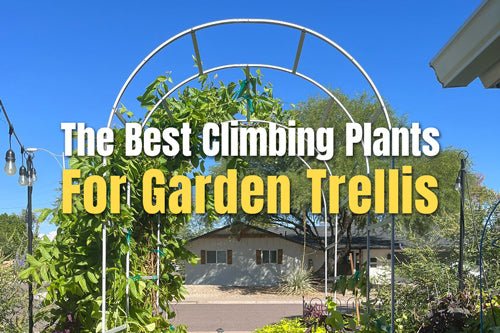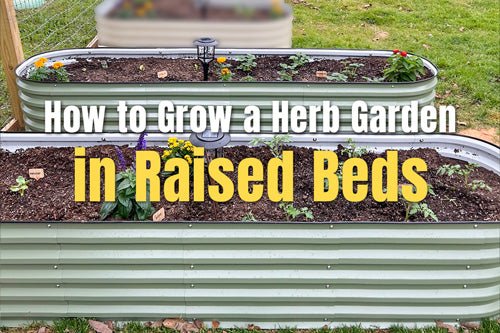From Seed to Bloom: A Guide to Gardening
By Zeeva Usman
Author bio: Zeeva Usman is a Content Marketing Manager at Peter and Petra. She is leading the remote working training program at Human Right Warrior and content marketing specialist at Church Marketing Agency. When not working she loves to play with her two dogs, Palm and Oreo.
Gardening is a productive and rewarding pastime that can bring color, life, and joy to your home or workplace. There is a certain satisfaction in growing something from a tiny seed to a full-fledged bloom. It is also a great way to connect with nature and get outdoors in the fresh air. Whether you already have a green thumb or are a gardening novice, this guide provides you with the resources you need to create and maintain a beautiful garden.
Here you will learn how to select the right seeds and plant them correctly, care for your garden, choose the right tools, and troubleshoot common issues. With a little patience and some helpful tips, you’ll be able to watch your garden grow from seed to bloom.

1. Selecting the Right soil and Location
Selecting the right soil and location for your garden is a crucial step in ensuring its success. Your garden should be in an area that receives at least six hours of direct sunlight per day, as most plants need ample sunlight to thrive. If you’re planting in a raised garden bed, be sure to select a potting soil designed for your plants. You should also choose a soil that has the proper pH level for the type of plants you’re growing. Lastly, ensure that your garden is well-drained by placing it on a raised bed or slope if necessary. Following these steps will help ensure your garden gets off to a strong start.
2. Planting the seed
After selecting the perfect seeds for your garden and preparing the soil, it's time to get planting! Planting the seeds is the most exciting part of the gardening process, as it marks the start of your journey from seed to bloom. It's important to follow the instructions on the seed packet to ensure that your seed is planted at the correct depth and distance apart from other seeds. For example, some vegetables, like carrots and tomatoes, require that you plant the seeds 2–3 inches deep, while other crops, such as lettuces, should only be planted 1/4–1/2 inch deep. Additionally, be sure to check the recommended space between seeds, as this can vary depending on the crop. Planting the seed correctly is the first step to starting a successful garden!
3. Watering and Fertilizing the Seedling
Once the seedling has been planted and the soil has been properly cultivated, it is time to water and fertilize the seedling. Watering should be done at least once a week, and more if the soil is dry or the plant is in direct sunlight. Remember to use a watering can with a long spout to avoid damaging the fragile seedling. When fertilizing, use a balanced, water-soluble fertilizer to ensure the seedling receives the necessary nutrients for healthy growth. Be sure to follow the instructions on the fertilizer packaging, as too much fertilizer can be toxic to the seedling.
Also read: When Is the Best Time of Day to Water the Raised Garden Bed?
4. Choosing the Right Tools and Supplies
Choosing the right tools and supplies is essential to any successful gardening venture. It is important to select the proper tools and materials for each project to ensure the best results. When selecting tools, consider the size of the project, the type of soil, and the size of the space you are working with. In addition, it is important to select the proper supplies, such as fertilizers, weed killers, and insect control products, that are safe for use around plants and people. Finally, make sure to buy durable tools and supplies that will last for many years. With the right materials and tools, you can create a beautiful garden from the seed to the bloom!

5. Regularly Monitoring the Seedling's Growth
Regularly monitoring the seedling's growth is of the utmost importance for ensuring that it is healthy and thriving. First and foremost, it is important to ensure that the seedling has enough water to thrive, but not too much to drown it. Additionally, check for signs of disease or pests, as this can drastically impede the growth of the seedling. You should also check the environment to make sure it is suitable for the seedling, as too much or too little sunlight, as well as inadequate temperatures, can impede the seedling's growth. By regularly monitoring the seedling's growth, you can help ensure that it will reach its full potential and bloom into a beautiful flower.
6. Appropriate Pruning of the Plant
Pruning is an essential part of a successful gardening experience. It is an important step that helps maintain the shape and size of the plant, as well as ensure it can receive adequate light and nutrients. When pruning, it is important to understand the type of plant you have and when the best time to prune is – many plants should not be pruned in the summer or winter months. Additionally, it is important to avoid over-pruning, as this can damage or even kill the plant. Always use sharp, clean pruning tools and make sure to clean them between plants.
7. Transplanting the Seedling to its Permanent Location
Once the seedling has established itself in its starter pot, it is time to transplant it to its permanent location, like in a metal garden bed. Transplanting is best done in the early morning or evening, when the temperatures are cooler and the soil is moist. Carefully dig a hole that is large enough to accommodate the root system and gently place the seedling in the hole, ensuring the crown of the plant is at the same level as it was in its starter pot. Then, fill the hole with the soil and lightly press down around the base of the seedling. Finally, water the seedling to help it settle in its new home.
8. Identifying and Combating Common Pests and Diseases
One of the most important aspects of gardening is being able to identify and combat common pests and diseases. Identifying the pests or diseases that are affecting your plants is critical in order to effectively treat them. Regularly inspecting your plants for signs of damage or infections is key to preventing the spread of these pests and diseases and ensuring healthy growth. Common pests and diseases can be treated with a variety of chemicals, biological agents, and cultural practices. It is important to follow directions carefully when using these agents, as improper use can lead to plant damage. Being able to correctly identify and combat pests and diseases is essential for successful and sustainable gardening.
Conclusion
Gardening is an excellent way to bring beauty and life to your home or Office. With the right kind of care and attention, you can enjoy a beautiful garden full of colorful blooms in no time. From germinating the seeds to nurturing the plants, this guide has provided the necessary tips and tricks to help you successfully grow your own garden. With a little patience and the right knowledge, you can achieve the garden of your dreams.





